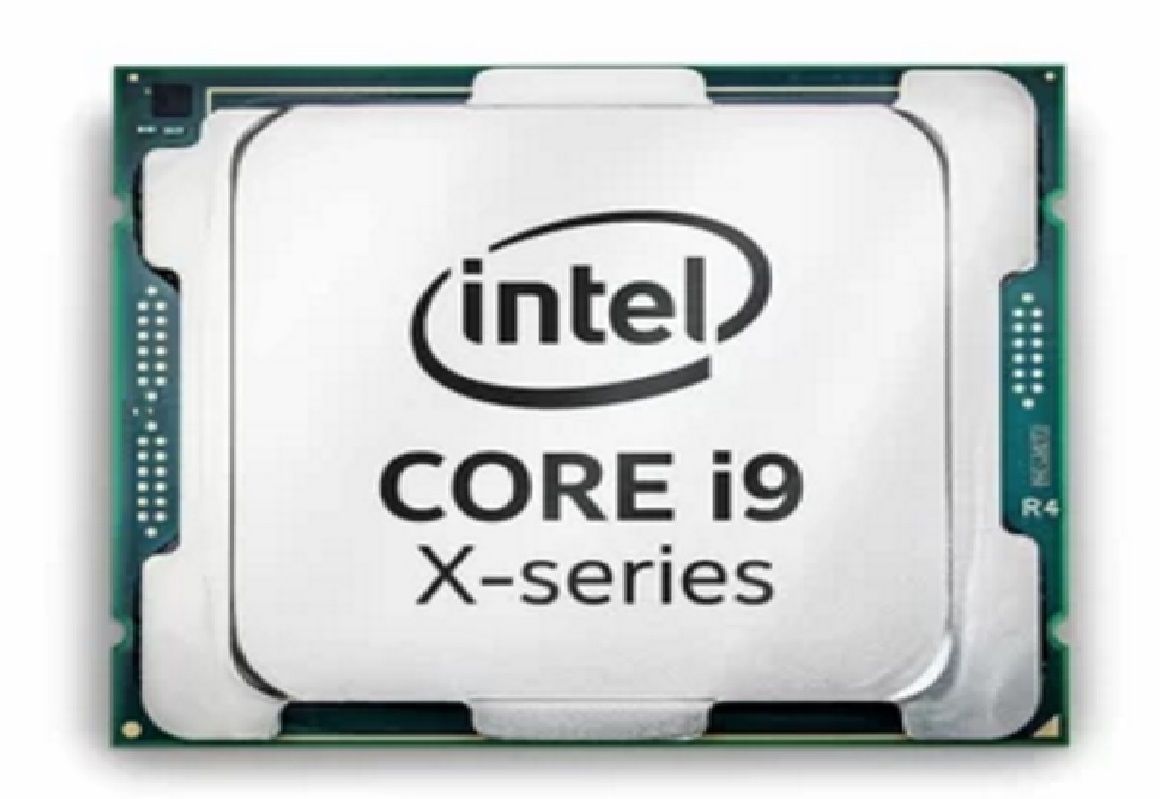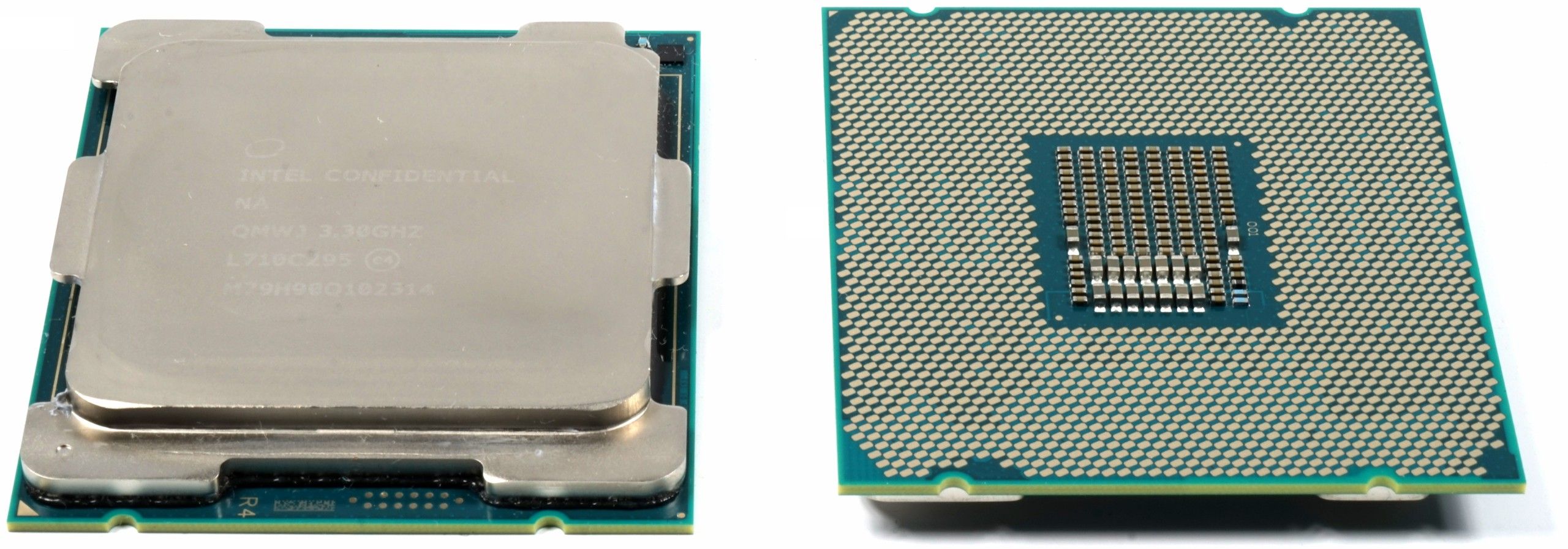Intel Core i9-7900X Review: Meet Skylake-X

Intel’s new Skylake-X processors span the Core i5, i7, and i9 families, but all drop into the same LGA 2066 interface, enabled by the X299 chipset.
They're aimed specifically at high-end desktop users who need anywhere from four to 18 physical cores. Meanwhile, existing Skylake-S processors soldier on, popping into LGA 1151-equipped motherboards for mainstream desktops.

The company claims that several architectural enhancements to Skylake-X provide as much as 15% more performance than Broadwell-E in single-threaded workloads, while heavily-threaded tasks should be up to 10% faster.
Dominance in the high-end desktop segment began a decade ago for Intel. Since then, the CPU market has largely been a lopsided affair. Without much competition challenging its position, Intel never saw fit to cut prices or innovate aggressively. AMD's return to the table with Ryzen changed that with more cores, SMT, and unlocked multipliers, all for less money.
Now Intel is looking to defend its flagship against the recently-announced AMD Threadripper CPU, sporting 16 cores, 32 threads, and 64 lanes of third-gen PCIe connectivity. Of course, the enhancements to Skylake-X aren't any sort of knee-jerk reaction. These were in the works for years. Still, Intel moved on today's announcement with unfamiliar speed (tripping on its laces in the process). It also adjusted pricing in a way we haven't seen before. Enthusiasts, enjoy.
Specifications
Intel Core i9-7900X
The 12+ core Skylake-X models are still on the distant horizon, and our Core i7-7440X was inexplicably delayed in shipping. That leaves us with the 10-core Core i9-7900X for today's review. But first, let's discuss the complete line-up of high-end options:
Kaby Lake-X
We aren't accustomed to seeing current-gen architecture in the HEDT portfolio. Typically, the top models lag the mainstream chips by a generation or two. Dropping a pair of Kaby Lake-based chips into LGA 2066 changes this. Fortunately for fans of familiarity, everything else complementing the X299 platform controller hub is Skylake-based...though that could change soon. Earlier this year, Intel announced its 'Data Center First' strategy, which will see the newest processes coming to Xeon products before the desktop. Considering that the HEDT line-up consists of re-purposed data center dies, HEDT may become leading-edge.
In an unprecedented expansion, Intel grows its HEDT family from four models to nine, including those two Kaby Lake-X models. They're a curious addition, supporting two DDR4 memory channels, whereas Skylake-X exposes four. That means you can only use half of your motherboard's DIMM slots with a Kaby Lake-X CPU installed. Fewer PCIe lanes also result in restricted I/O options. Intel disables the on-die HD Graphics 630 engine, allowing the unused silicon to absorb heat and purportedly improve overclocking headroom. Aside from slightly higher base clock rates and a higher 112W TDP, the Core i5-7640X and i7-7740X are otherwise similar to their Skylake-S counterparts, right down to pricing.
In our opinion, matching "affordable" processors with expensive motherboards evokes images of the Core i3-7350K, which isn't popular due to the same sort of imbalance. Intel tells us that motherboard manufacturers can build low-cost X299 platforms specifically for Kaby Lake-X, but we don't see any of them scrambling to create such a niche product as of yet.
Skylake-X
Intel supports DDR4-2666 on every Skylake-X CPU except Core i7-7800X, up from Broadwell-E's official DDR4-2400 specification. It deliberately disables ECC in order to dissuade the Xeon crowd from adopting more enthusiast-oriented platforms.
Intel hasn't released detailed specifications for the higher-end CPUs, but we expect it'll expose similar memory specifications. We also expect frequencies to decline as core counts increase.
| Active Cores |
1 | 2 | 3 | 4 | Cores 5-10 |
| Intel Core i9-7900X (GHz) Turbo Boost |
4.3 | 4.3 | 4.1 | 4.1 | 4.0 |
The Core i9-7900X features the same Turbo Boost 2.0 technology enabled on previous-generation processors, except that clock rates are notably higher this time around. Expect 4 GHz with 10 active cores. Intel also arms six of the Skylake-X models with Turbo Boost Max 3.0. The company improved this technology to target the two fastest cores running lightly threaded workloads. In Broadwell-E, Turbo Boost Max 3.0 only accelerated a single core. Both favored cores max out at 4.5 GHz. Naturally, IPC throughput should be up quite a bit, addressing the big disadvantage Intel's big HEDT chips sometimes suffered compared to its nimbler quad-core desktop SKUs. Currently, Turbo Boost Max 3.0 requires a driver on some motherboards. But Intel plans native Windows 10 support to eliminate this in the future.
We also get partial AVX-512 support, meaning the upcoming 18-core flagship should be the first desktop host processor enabling 1 TFLOPS+ of compute performance.
Skylake-X is notably different from Skylake-S in that its cache hierarchy is completely re-worked. Core i9-7900X sports more L2 and less L3, which should improve performance in most applications. A new 2D mesh architecture makes its debut as well. Like AMD's Infinity Fabric, this architectural element isn't a universal win, we're finding (more on this shortly).
Whereas enthusiasts were dismayed to discover that the 10-core Core i7-6950X would sell for $1700+, they should be happy to learn of the 10-core Core i9-7900X's $1000 price tag. Paying a cool grand is the only way to get 44 lanes of PCIe 3.0; stepping down to Core i7-7820X drops you to 28 lanes. As storage migrates to the PCIe bus, those extra lanes could come in useful for SSDs since multi-GPU configurations aren't as popular these days. Intel does expose a new PCIe Virtual RAID on CPU (VROC) feature that allows you to coalesce up to 20 SSDs into a single bootable volume. Notably, you can assemble the RAID array on any available PCIe slot, whereas previous RSTe RAID implementations required a connection to the chipset. Sidestepping the chipset circumvents the bottleneck presented by DMI. This comes at a price, unfortunately. You're forced to purchase an upgrade key that plugs into the motherboard to unlock VROC functionality. Server customers are familiar with this practice, but it's not going to be popular among enthusiasts. We don't even know what the key will cost yet.
Intel does reinstate DMI and PCIe bus overclocking, which should please power users. A new memory controller-PLL trim voltage setting is designed to increase ratio-based memory overclocking capabilities, while a new AVX-512 ratio offset joins the standard AVX offset to control thermals during taxing AVX-enabled workloads.
We encountered a few odd performance anomalies as we tested Core i9-7900X during the past week. This launch certainly feels rushed, and though motherboard firmware updates (from multiple vendors) addressed some of the oddities, others persist. It appears that Intel's Skylake-X models will require a period of optimization, much like AMD's Ryzen processors.
© 2025 Zeon Technology



